about the work
Artist-naturalists such as Mark Catesby, a self-taught Englishman, are responsible for much of what is known of the natural history of the Southeast. Armed with watercolor and brush, Catesby arrived in Charleston in 1722. For three years, he documented the plants and animals of what is now South Carolina. Catesby painted in a naturalistic but rather flat style that, he said, “may serve the Purpose of Natural History, better in some Measure, than a bold and Painter-like way.”
Catesby’s trip to America was financed by the Royal Society’s purchases of subscriptions to his proposed work. However, when he returned to London, he found the Society did not have the funds to have his watercolors engraved. Undeterred, Catesby learned to engrave and produced the plates himself. He even hand-colored the first set of prints.
The two-volume set, The Natural History of Carolina, Florida, and the Bahama Islands contained more than 100 plates of birds, as well as illustrations of fish and snakes. A pioneer in ornithology, Catesby created images of birds and other animals which established a format for later artist-naturalists such as Alexander Wilson and John James Audubon. Catesby’s text was also an important contribution to European knowledge of America.
about the artist
In 1722 Englishman Mark Catesby sailed to a sparsely settled, one-year-old Royal Colony. The colony, which occupied the extreme edge of Western civilization, was still only a year old and mostly a lawless wilderness populated by venomous plants and animals unknown to science. The few settlements within its borders were constantly under attack from Native American raiding parties, Spanish & French militia, and Pirate fleets. Only four years before, Catesby’s visit the colony’s only notable port had been blockaded by notorious pirate Edward Teach, better known as Blackbeard. The city in question was called Charleston, after King Charles the Second of England, and the colony in which it was situated was called South Carolina, after King Charles the First. England’s foremost association of scientists, naturalists, and philosophers, then chaired by the man credited with discovering gravity – Isaac Newton – financed Catesby’s voyage to this exotic and dangerous backwater, in order to bring whatever strange and unknown creatures inhabited it to light.
For four years, Catesby traveled the length and breadth of South Carolina as well as portions of Georgia and the Bahamas. He described mysterious, fabulously strange places and wildlife. Among them, ‘swamps where coniferous trees lost their needles in winter, dense maritime forests of oaks that stayed green year-round, endless salt marshes where grasses drifted in the wind to the horizon…massive buffaloes, exotically colored frogs, ducks that nested in trees, giant butterflies, bald-headed eagles, giant-leaved foul-smelling trees.’ All these he meticulously cataloged and painted by hand, eventually collecting into a single-volume book called Natural History of Carolina, Florida, & the Bahama Islands. Catesby was the first to observe that birds migrate in winter, as opposed to sleeping at the bottom of frozen ponds, as was commonly believed at the time. 160 copies of Catesby’s revelatory Natural History were produced for its first edition, each of which was hand-colored by the naturalist himself – of these, only 80 have survived to the present day.

